Coming soon to a railway near you… Chris Howe selects his top 20 innovative products that will improve railway safety, accessibility and efficiency
Electrification of the railways is a perennial topic at Rail Live, and there is always an abundance of equipment and services on display that aim to improve efficiency and reduce the cost, especially with a decline in funding for new schemes.
Coming soon to a railway near you… Chris Howe selects his top 20 innovative products that will improve railway safety, accessibility and efficiency
Electrification of the railways is a perennial topic at Rail Live, and there is always an abundance of equipment and services on display that aim to improve efficiency and reduce the cost, especially with a decline in funding for new schemes.
However, installing new wires isn’t the only way the industry has sought to transition away from a reliance on fossil fuels.
Over the past few years, there has been a noticeable move away from the use of petrol or diesel for power tools.
This has been made possible by rapid improvements in battery technology which allows for longer run times, and the production of increasingly powerful cordless hand tools which are ideally suited for use on the railway.
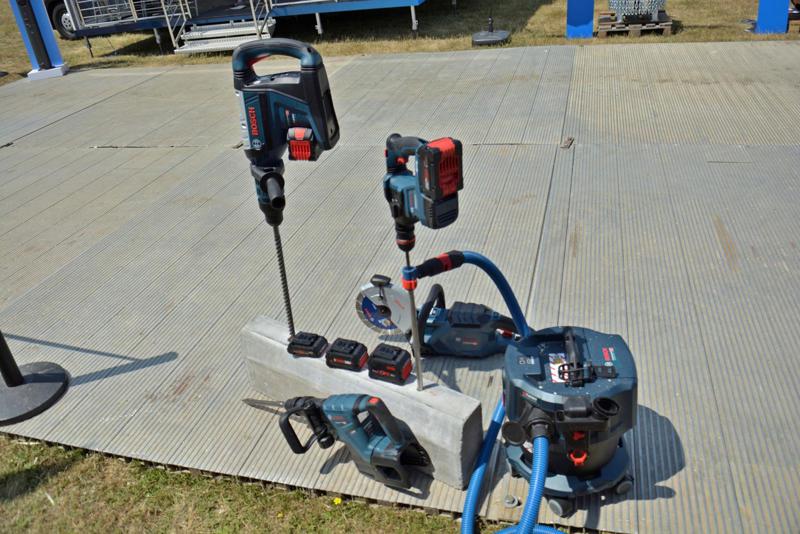
1) Bosch batteries
Bosch is leading the way when it comes to battery technology. While the lithium-ion chemistry hasn’t changed, it has developed solutions which allow for the batteries to perform better and last longer.
One issue with batteries is that they get hot when being charged or when under heavy and constant load. This heat reduces the performance and life of the battery.
To overcome this, Bosch has developed a patented cell casing which draws heat away. This not only prolongs the life of the cells, it also means their ‘ProCore’ batteries can provide up to 12Ah of charge and power tools with a power rating equivalent to 1600w.
They also have smart battery technology built in that protects the batteries from becoming overloaded.
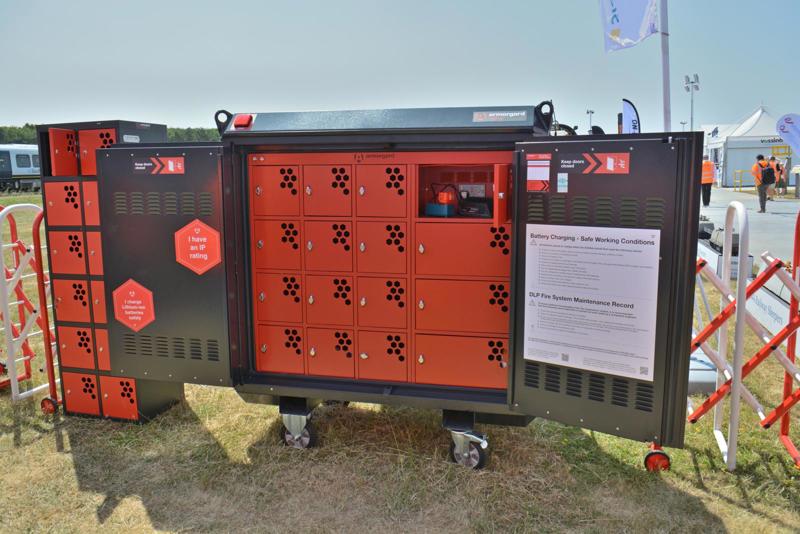
2) Armorgard Volthub
The growth in battery use means that a new issue has arisen - how to safely store and charge large numbers of batteries.
One solution offered by Armorgard allows the storage and charging of up to 32 batteries at once.
Each compartment has two power outlets for charging batteries. Additionally, a fire detection and suppression system runs through all the compartments.
This means that in the unlikely event of a battery fire, it is extinguished using a fire suppressant within the one compartment. This ensures that the other batteries within the Volthub are kept safe.
The Hub also has active cooling which keeps the batteries at an optimal temperature when charging of between 20°C and 25°C.

3) Robel Modular Rail Grinding Machine
Many larger and more demanding pieces of equipment can now also be powered by batteries, rather than petrol engines or separate generators.
One such piece of equipment, called a railhead profile grinding machine, is (as the name suggests) used to profile rails after welding.
The ROGRIND 13.49 offered by German manufacturer Robel can be supplied with a battery power pack which can last up to 60 minutes on a single charge.
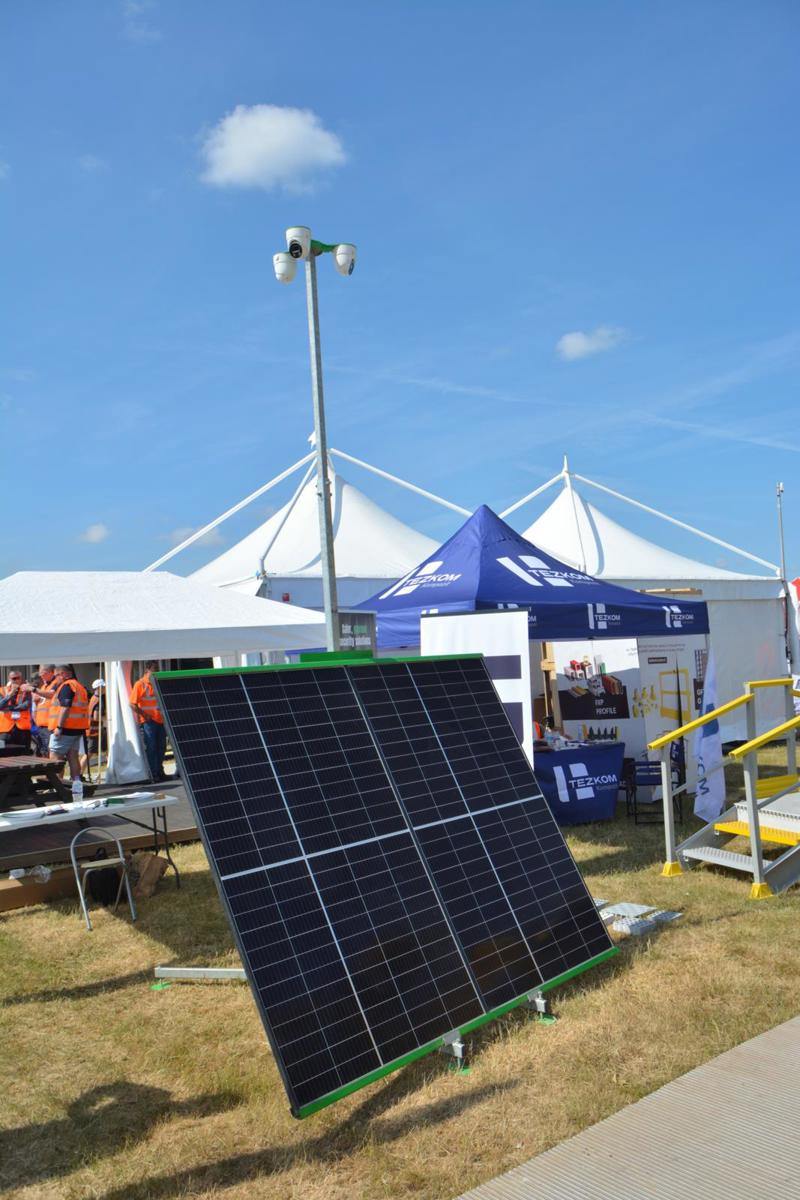
4) TRUST HIRE Solar-Powered CCTV Security Tower
As well as a shift towards the use of batteries, the market for solar-powered equipment has also matured significantly over the past few years.
A wide range of solar-powered equipment was on display at this year’s Rail Live - including a portable CCTV system, available from TRUST HIRE, which can be deployed to remote locations.
The energy-efficient system uses solar panels to charge batteries during the day, so it is possible for the motion detection and CCTV system to run 24/7 without the need to provide an external power source. And it can operate for around four weeks without the need to be charged.
The intelligent detection system has a range of 130 metres and can accurately distinguish between humans and animals to reduce false alarms.
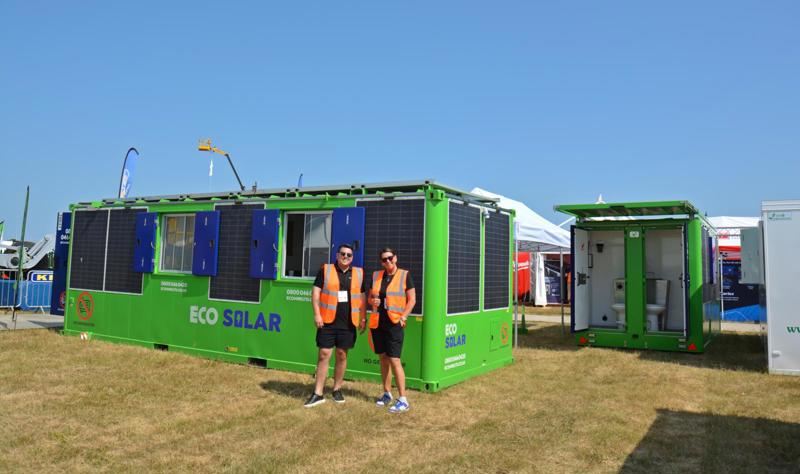
5) Eco Solar Welfare units
Welfare units (portable buildings) is another area where solar is seeing more widespread use.
Eco Hire can supply a range of 12-, 16- and 24-foot static and towable units which do not require a generator.
The units can run all year round, powered by an array of solar panels which are installed on the roof and on the sides to capture the low winter sun.
The solar panels charge batteries which can run a host of appliances such as a kettle, microwave and fridge, as well as energy-efficient lighting.
The increasing price of fuel, the lower cost of solar cells, and environmental benefits now means there is a cost benefit of using 100% solar units rather than those which would normally require a diesel generator.
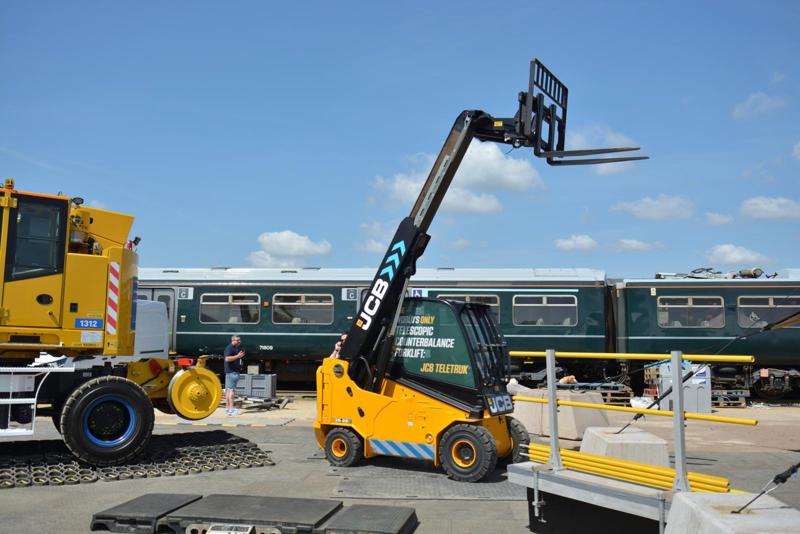
6) JCB 35-22E
Although battery technology has not developed sufficiently to power more heavy-duty plant machinery, there is a growing range of smaller battery plant machines available.
JCB’s range of battery-powered machines includes the 35-22E ‘teletruk’. The telescopic forklift has a lift capacity of 3.5 tonnes, or when the boom is extended by two metres it can lift two tonnes. This provides sufficient reach and capacity to load standard pallets onto both sides of flatbed vehicles or trailers.
The lead acid batteries can be swapped mid-shift if needed, but they can operate continuously for up to six hours. With machines such as this often operating intermittently, it is possible that teletruk could operate for a full eight-hour shift on a single charge.
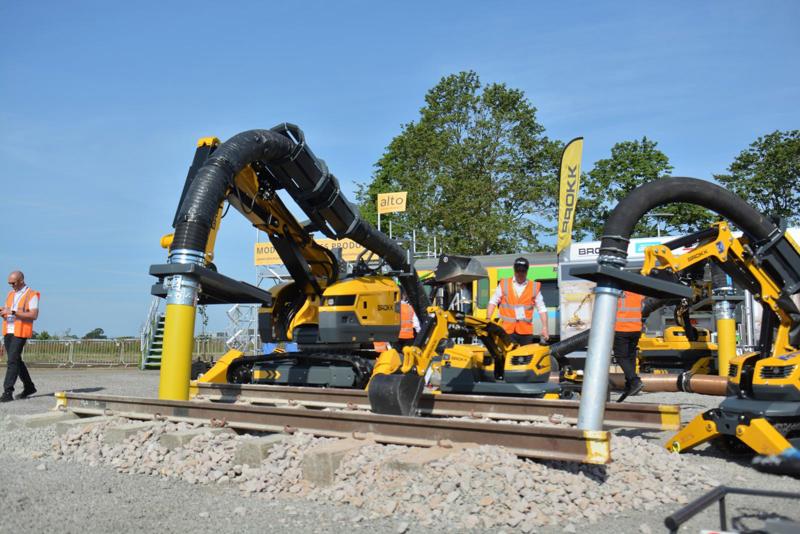
7) Brokk 500
Vacuum excavation is a process which is becoming much more widespread, as it is much safer than using excavators when working around cables or pipes.
Such systems can easily vacuum ballast from between rails and are much quicker than shovelling by hand.
Brokk offers a range of vacuum excavation systems, including the Brokk 500 demolition robot.
This remote-controlled tracked vehicle can be fitted with an attachment to extend the range of vacuum excavation trucks, allowing vacuum excavation to take place where trucks cannot reach.
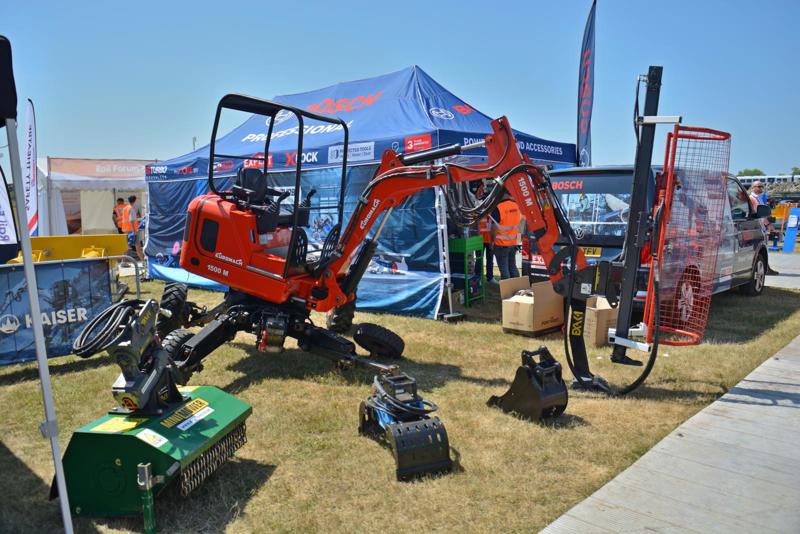
8) W. Smart Spider Excavator
The stability of legacy embankments is becoming a growing issue for Network Rail, with several landslips reported in the past year alone.
However, working on embankments to remove material or to install ground anchors to prevent landslides is a perilous task.
To overcome this, W. Smart Construction, which specialises in providing ‘spider excavators’, has at its disposal a Euromach 1,500-metre mobile walking excavator.
The two-tonne machine may be relatively small, but it is still highly capable and is able to operate on inclines of 45 degrees (or more if the winch is deployed).
The machine can be fitted with a range of tools, from standard buckets used for removing material or an attachment used for installing ground anchors.
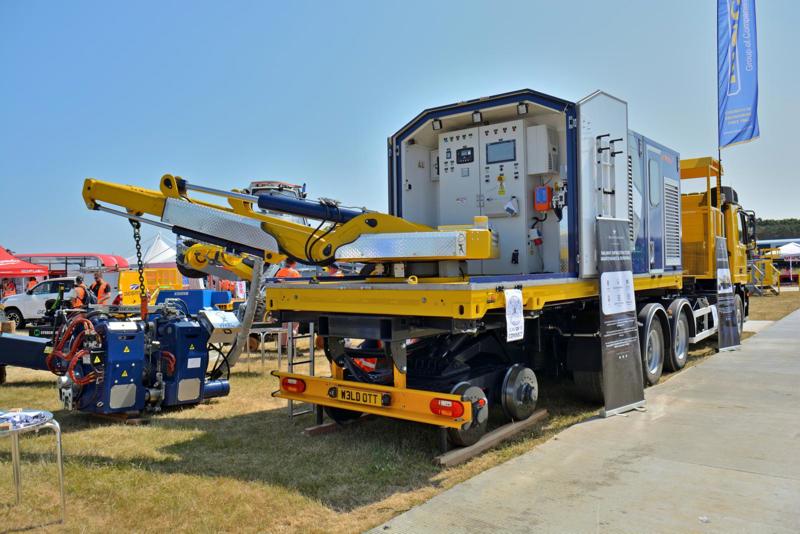
9) Flash-butt welder
One piece of technology that has been around for a number of years, but which doesn’t seem to have been widely adopted, is ‘flash-butt welding’.
This system welds lengths of rail together using a high current which passes through the rails, fusing them together.
One problem has seemingly been the need for a separate large generator and heavy welding attachment, which usually requires a road-rail vehicle (RRV) excavator to lift.
However, On Track Technicians are hoping to be able to provide a system which incorporates the generator and a crane to lift the welder, on board a single RRV platform.
The RRV consists of a Mercedes Actros which has been adapted to run on rails by UK-based King Rail, mated to a flash-butt welder and generator supplied by Geismar.
The system is currently waiting for approval so that it can be used in Britain.
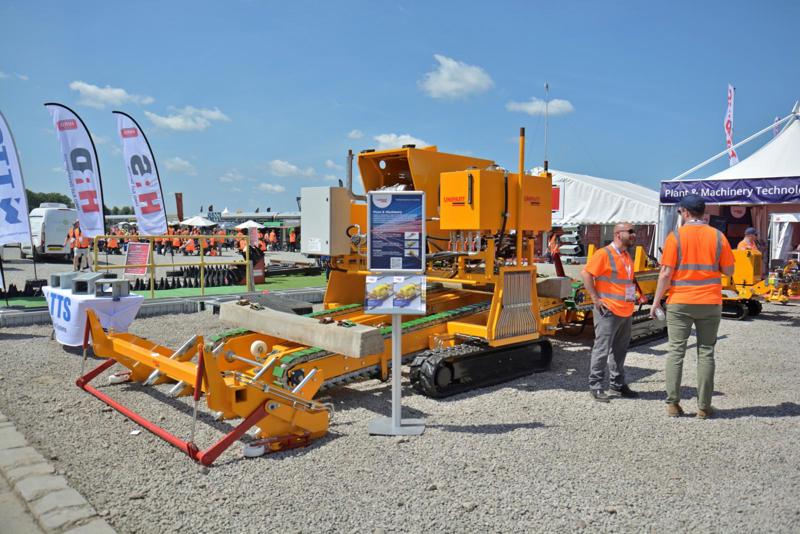
10) Unipart sleeper layer
Another piece of equipment awaiting approval is a sleeper layer which has been developed by Unipart and manufactured at its plant in Coventry.
The sleeper layer can store up to 14 sleepers onboard, and then lay and precisely space them autonomously along a predetermined route.
This efficient machine, which only needs one operator to oversee its safe operation, can install sleepers as quickly as they can be loaded.
Loading would be done by an RRV which can lift multiple sleepers in one go - either from the ground or rail trailers. The sleepers are then fed along a conveyor system, which pre-spaces them before depositing them onto the ballast.
The machine can lay concrete as well as composite and steel sleepers.
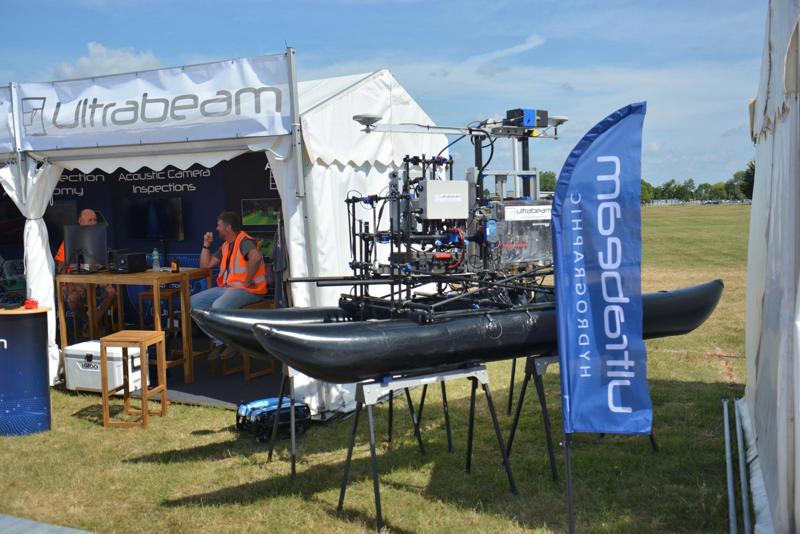
11) Ultrabeam
Rail Live is about much more than plant and machinery, with numerous other services provided.
Ultrabeam is one such company, providing surface and underwater survey services.
On display was a remote-controlled modular survey platform and autonomous amphibious vehicle that was initially developed for the military.
The platforms can be fitted with acoustic cameras which are capable of capturing high-resolution 2d images - ideal for inspecting sheet piling.
The craft can also be fitted with LiDAR sensors which can capture 3D images of structures both above and below the water.
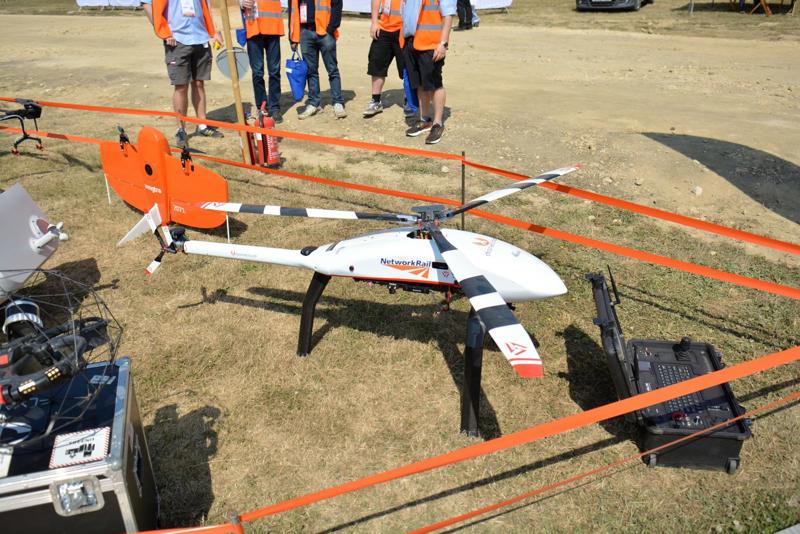
12) Railscape UAV
If aerial surveys are required to cover longer sections of the railway, UAVs (unmanned aerial vehicles, commonly referred to as drones) are an obvious choice.
They have the ability to cover long stretches of railway very quickly. But they are currently limited by a ‘line of sight’ restriction. This means UAVs must be within the operator’s or accompanying spotter’s line of sight at all times.
To overcome this, Network Rail and the British Transport Police have been conducting trials, working in conjunction with the Civil Aviation Authority, Dronecloud, and RAUS (the drone arm of Railscape).
The trial, which saw RAUS operating a Velos UAV from Birmingham Rail Operating Centre, was aimed at testing the ability of registered operators of larger UAVs to fly drones beyond the visual line of sight (BVLOS for short).
The idea is that they could be used by the BTP to monitor the railway for trespassers or by Network Rail for asset management.
The technology has the ability to reduce line closures by allowing the BTP to more quickly respond to trespass reports.
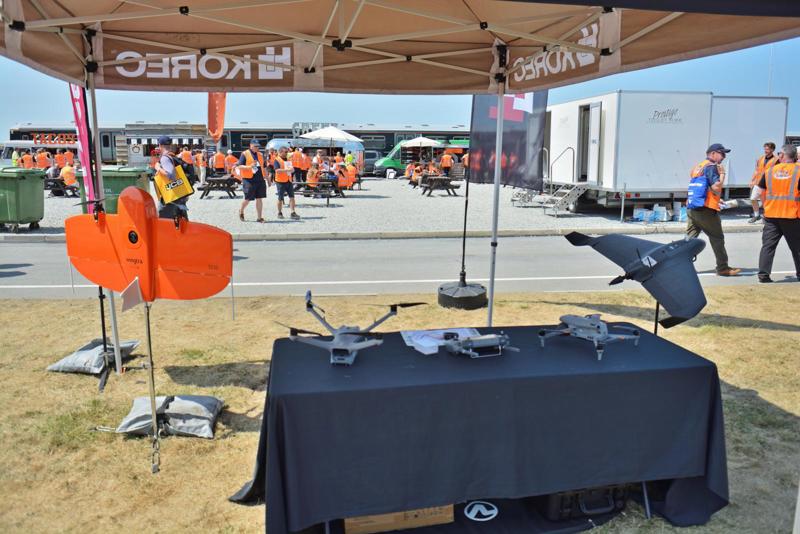
13) Korec
Even within the current line of sight restriction, UAVs are becoming an important tool and there are now a number of companies offering various services.
Korec, which specialises in supplying measurement solutions, is one such company which also provides drone services. It can provide a range of UAVs and training solutions, which they say can help maximise the potential of the products.
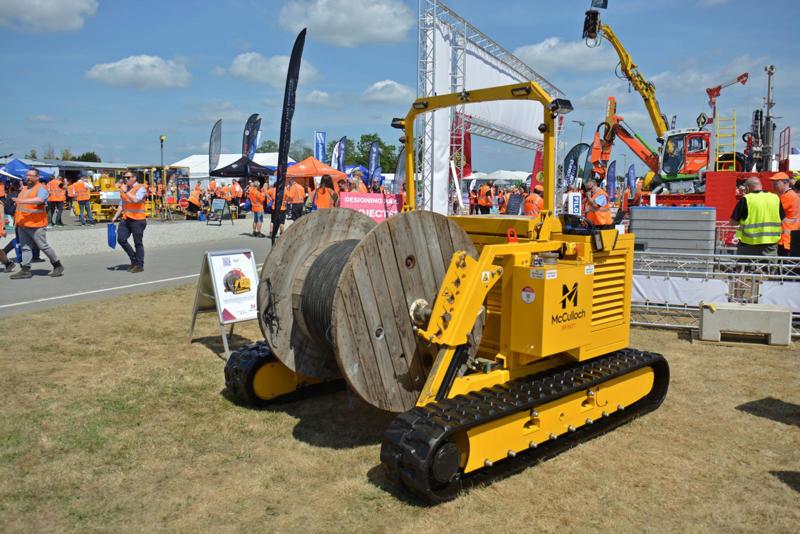
14) McCulloch reel handler
A small cable reel used to transport electronics or communications cables can be cumbersome to transport and handle, especially in railway environments.
Scottish-based McCulloch has therefore developed a remote-controlled tracked vehicle, which is able to lift, transport and dispense cable from reels.
The compact and agile TCT (Trac Cable Transporter) is certified for use under live overhead line equipment, and can dispense cable reels of up to 1,600mm in diameter and up to two tonnes in weight.
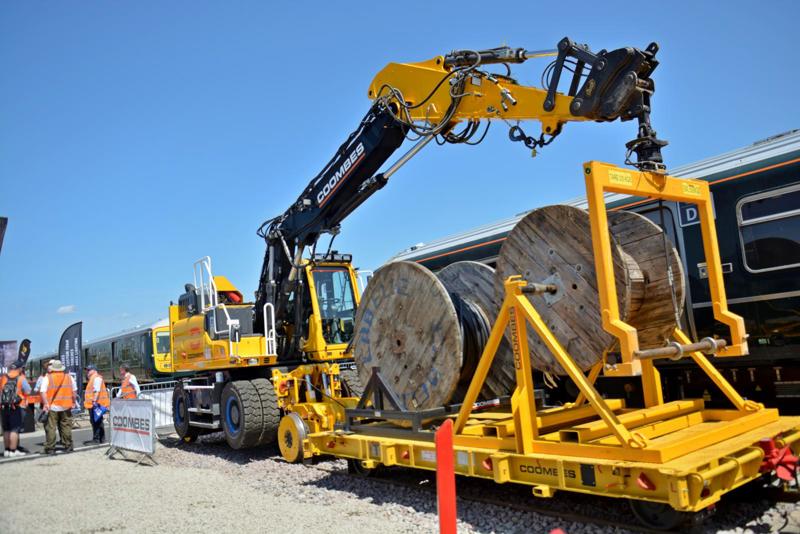
15) Coombes RRV
Lifting larger cable reels may require something a bit more heavy-duty, which is where larger road-rail vehicles come in.
For this, Coombes group has road-rail excavators which can be fitted with an attachment for handling and dispensing reels weighing up to five tonnes.
The RRV can work in conjunction with a rail trailer which has a carrying capacity of 20 tonnes and can transport two reels at once.
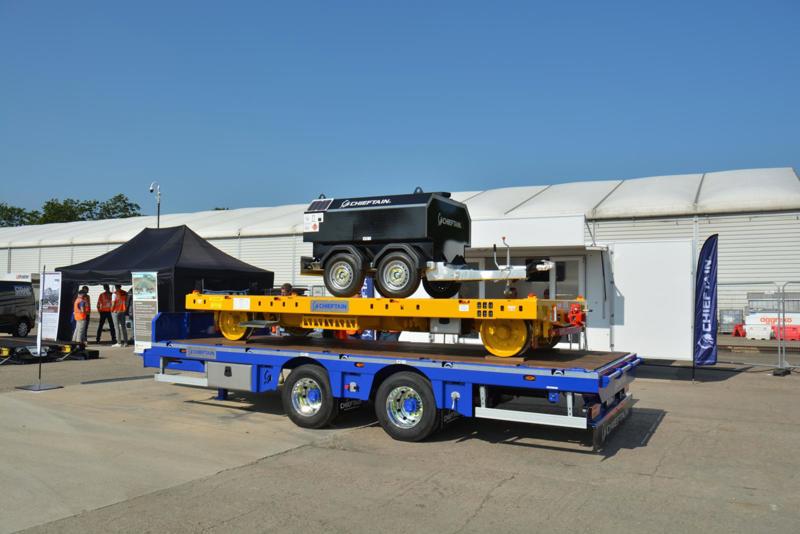
16) Chieftain rail trailer
Chieftain Trailers are perhaps more synonymous with road and agricultural trailers. But they also produce a range of rail trailers, such as the Chieftain rail trailer, which can be pushed/pulled by an RRV and can carry up to 21.8 tonnes.
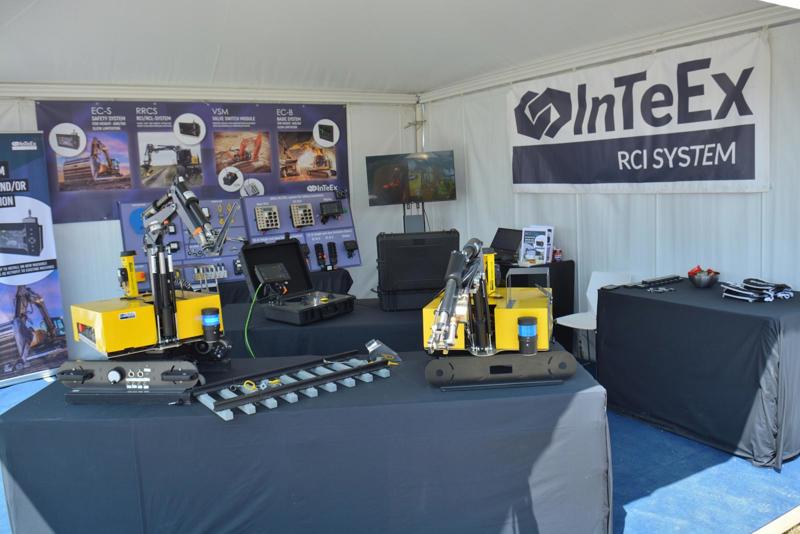
17) InteEx
Much of the equipment and services on display are designed to improve safety for track workers.
Systems such as that provided by InteEx can create a virtual roof and walls around excavators, to stop them from hitting structures or OLE.
The system, which is now mandatory on RRV excavators which are designed to work within rail environments, relies on a number of sensors mounted to vehicles and sophisticated software.
It can stop the excavator from moving if the operator tries to move beyond a predetermined virtual zone, or if the sensor detects the machine is working beyond its rated lifting capacity.
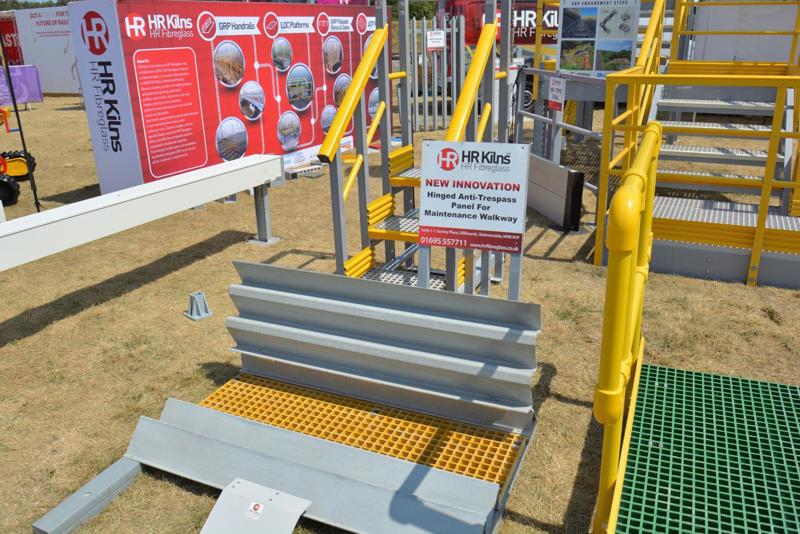
18) Hinged anti-trespass panel
Another product waiting for approval is a panel designed to deter trespassers from the railway.
The standard anti-trespass panels manufactured by HR Kiln are already used on level crossings, to stop people from walking onto the railway.
The existing panels sit inbetween and to the side of the rails, to deter people from walking onto the railway from level crossings.
However, HR Kiln has developed a hinged panel which can be locked shut, but crucially can be opened to allow access by railway workers.
Although the standard panels are already widely used, the addition of the hinged section means the new panels must first be approved before they can be used on the railway.
The hinged panels do, however, have clear benefits and can reduce the need for palisade fencing to be installed close to level crossings.
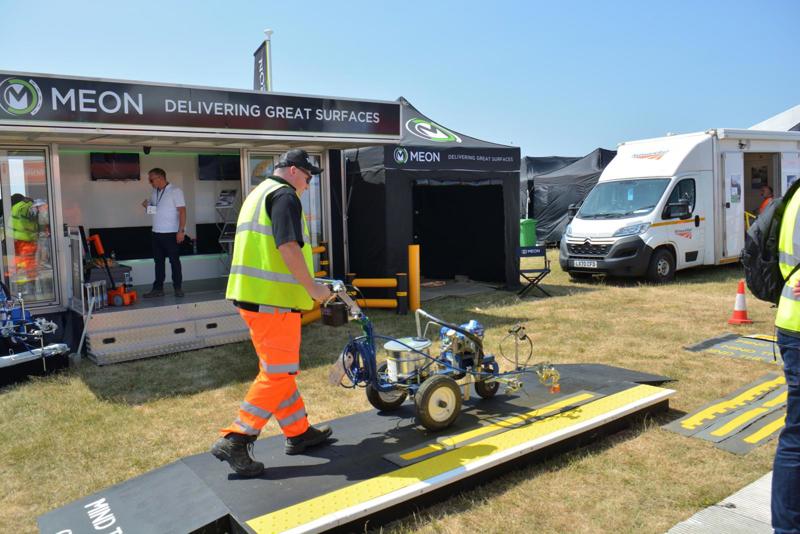
19) Penny Engineering
Some of the products on display don’t have an obvious rail application, but they can still have practical uses during railway works.
The PH50-PH180 series of vehicle-mounted cranes developed by Penny Engineering is a good example. While not designed specifically for the railway, they can make the loading and unloading of tools and equipment at work sites safer and easier.
The compact cranes have lift capacities ranging from 200kg to 1.4 tonnes. Additionally, the arms are able to extend up to five metres, depending on the model and weight being lifted.
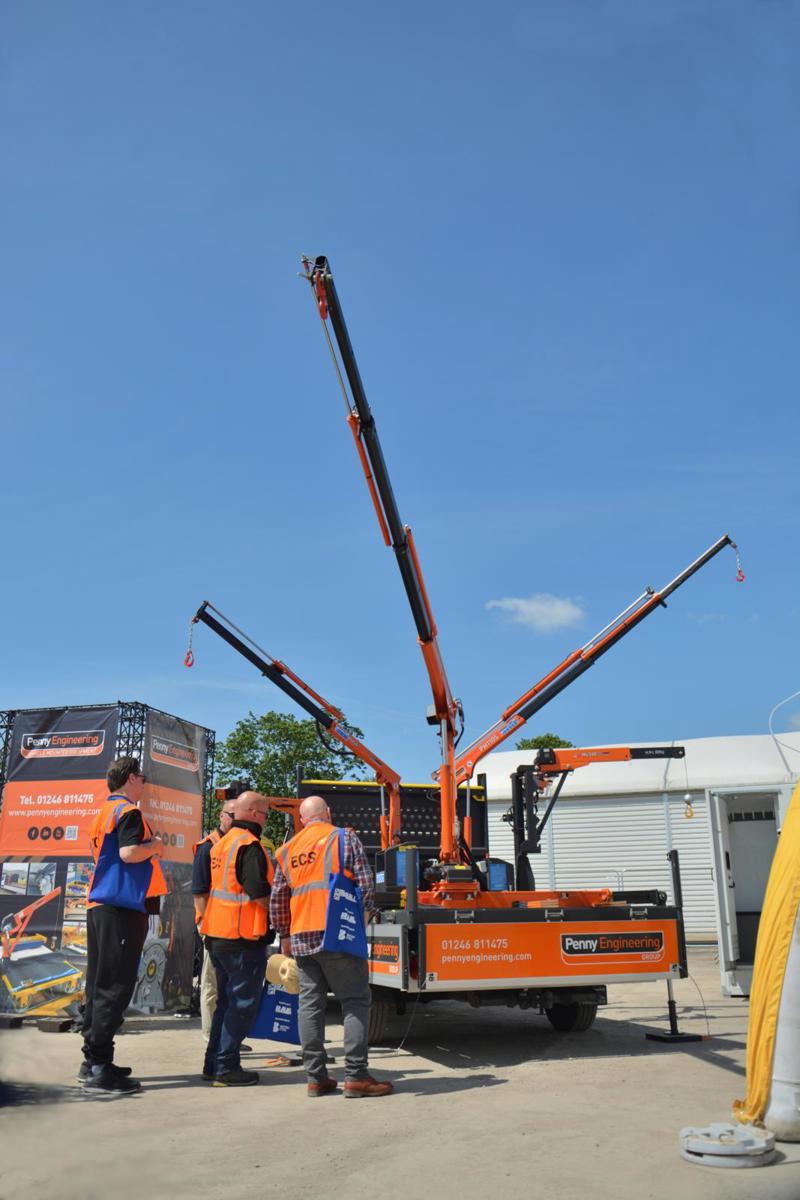
20) Mind the GAP!
I’m sure most people don’t give much thought to the yellow line or ‘Mind the Gap’ writing on platforms. But there’s more to the yellow paint than meets the eye.
The environmentally friendly and durable water-based yellow paint supplied by Meon-UK requires a special battery-powered line and paint striper (manufactured by Graco) to apply. The writing is applied using the same line striper to spray the paint over a stencil.
Login to continue reading
Or register with RAIL to keep up-to-date with the latest news, insight and opinion.

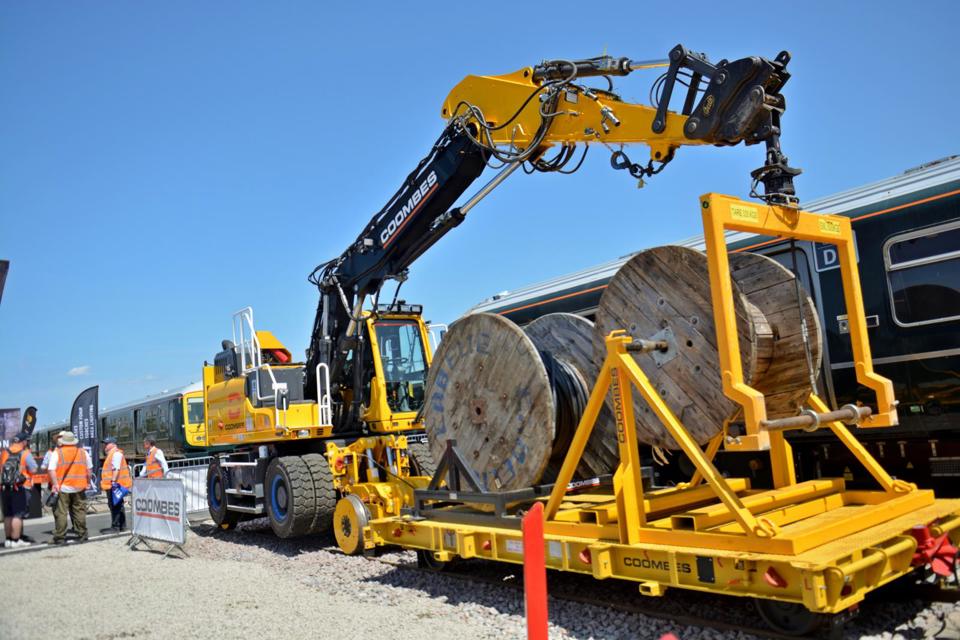

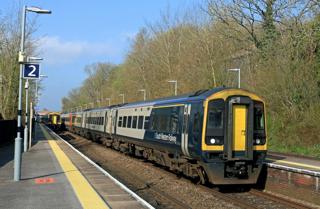
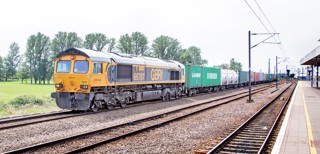
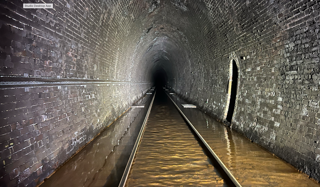
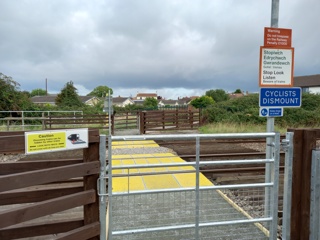












Login to comment
Comments
No comments have been made yet.